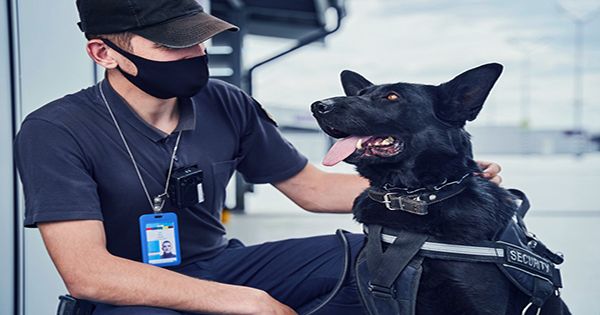Dogs have evolved a capacity to perceive human communication that much exceeds that of most other animals due to their extensive evolutionary history as domesticated animals. In addition, while some dogs are more literate than others recent are research shows are that the typical dog can recognize 89 distinct words and phrases.
The research authors explain how they set out to investigate the range of the canine language and to construct an inventory of the words and phrases to which dogs may respond in the journal Applied Animal Behaviour Science. They did this by asking 165 dog owners to rate their pups’ ability to identify 172 different words.
Although the researchers permitted participants to add some extra words and phrases that their dogs had learnt, these were picked from an established vocabulary checklist that was routinely used to measure the linguistic skills of human children. Names, commands, toys, food and drink, domestic goods, outside destinations, and activities are all grouped into seven categories.

The study’s most eloquent dog could distinguish 215 distinct expressions, while the least intellectual (but still excellent) dog could only answer to 15. On average, dogs demonstrated a vocabulary bank of 89 words and phrases, including 78 from the researchers’ list and 11 contributed by the owners. The words that dogs were most likely to comprehend were their own name, which is rather expected. More than 90% of dogs were able to identify words like “sit,” “come,” “down,” “good boy/girl,” “stay,” and “no.”
In contrast, only around ten percent of dogs were able to understand complex orders like “wash your feet” or “whisper,” and only a few canines were able to identify the names of other humans or pets. Certain canine breeds shown to be more competent than others at reacting to spoken signals, according to the authors. For example, purebred herding dogs and companion/toy dogs had the greatest vocabularies, whereas sports/gun dogs and terriers had the smallest.
Further research demonstrated that the ability of dogs to understand speech was unaffected by their age or any of their owner’s traits. The only characteristics that affected their language skills, other than their race, were their professional employment position and claimed to learn speed.
Professional canines, such as military or police dogs, were found to identify 1.5 times as many words than dogs that had never trained for a job. The authors of the study speculate that “formal training may be necessary for dogs to learn to respond to multiple words” based on this result. The findings might “help identify early the potential of individual dogs for various vocations,” according to the researchers, in addition to helping dog owners grasp the limitations of their pets’ vocabularies.
















